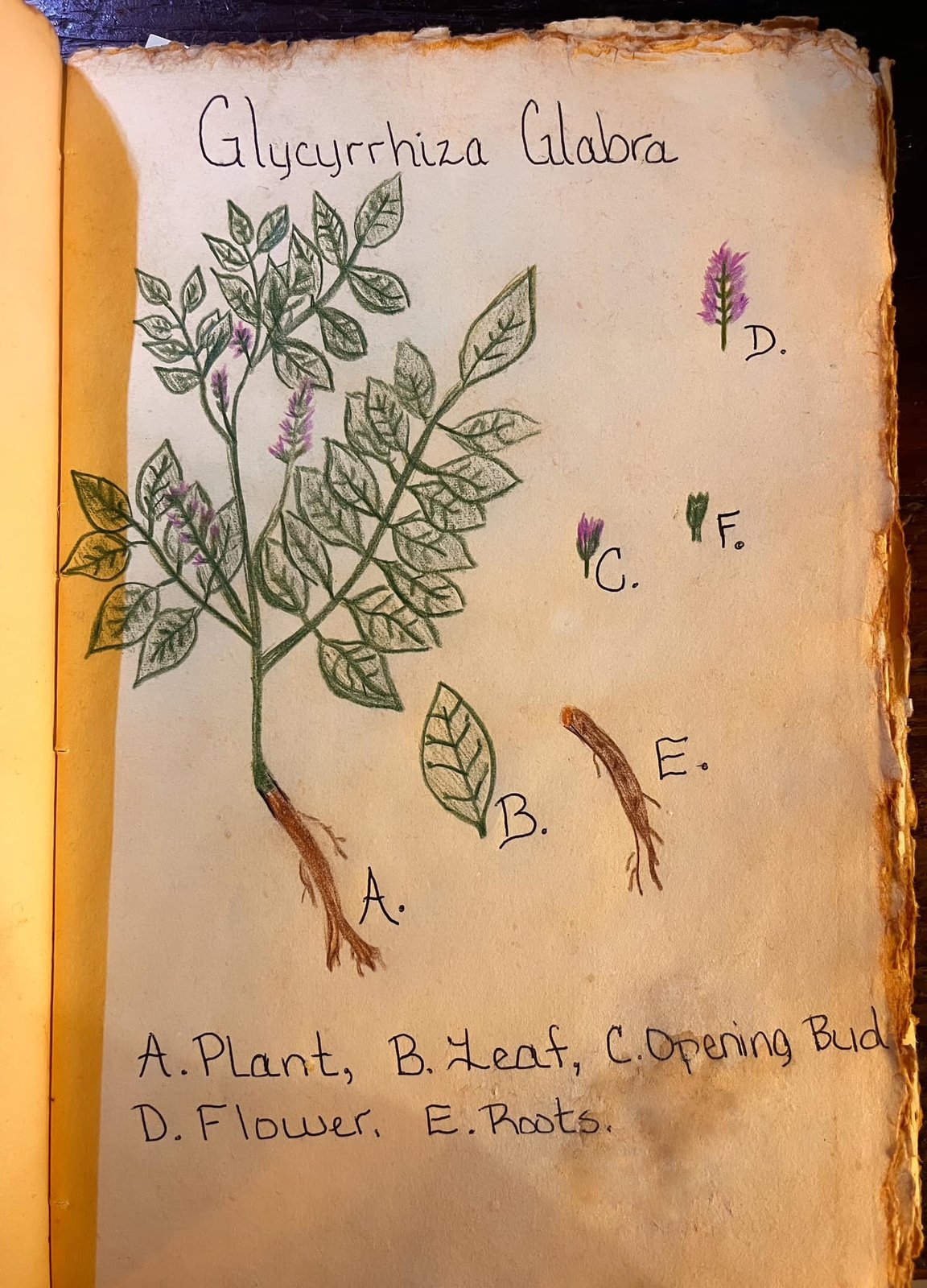
Plants are often viewed as alternative medicine. However, truth be told, plants are the original medicine. Today, I'm going to introduce you to a plant with so many benefits I may sound too grandiose attempting to cover them all. So, let's go back in time to Ancient Egypt where we have proof this plant was used medicinally.
You hear licorice and you think of the long, ropey Twizzlers right? I hear licorice and I think of the chopped brown roots in my apothecary. I think you'll be shocked to hear the two are very much related although current day Twizzlers, I assure you, have no health benefits.
In the 1920's Archeologists uncovered licorice root in the Ancient Pharaoh Tutankhamun's (or King Tut as some of you may know him) tomb. This didn't come as a shock because we know the licorice plant was used in its natural habitat region of Southeastern Europe and Southwestern Asia since at least 500BC and many claim even further back. Clay tablets from the Assyrian Empire included multiple references to the plant. In Ancient Greece, licorice root was favored for calming asthma, aiding chest problems, and healing canker sores. In Traditional Chinese Medicine, licorice was used as a general wellness herb that could remedy coughs and digestive problems. No matter how it was used amongst these different cultures, it had one thing in common. This plant held the common trait of being used as a cough remedy. In the 1760's a chemist from England decided that adding sugar to the licorice extract made it much more palatable to children for cough remedies. By the mid 1800's this sugary licorice concoction was turned into a candy treat. Well, I'm sure you can see where this is going. In 1845 the licorice gummy candy was born. By 1929 the company became Twizzlers. Although, today, that candy is filled with palm oil, red dye 40, corn syrup, and not healthy.
Licorice Root contains glycyrrhizin. Glycyrrhizin stimulates the adrenal cortex, therefore, producing hormones like cortisol, aldosterone, and androgens. These hormones all aid in the regulation of our body's metabolism and stress response. This being said, licorice root would make a great supplement for overall adrenal support. Glycyrrhizin also has an anti-inflammatory and anti-arthritic action. Licorice is a wet herb. When an herb is considered as a wet herb, you can count on it being a demulcent. This means, it produces a film that aids sore throats yet also can break up mucus filled coughs. As with all demulcents, it also may be used as a mild laxative. As an anti-inflammatory, this herb may help with arthritis and inflammatory digestive conditions. Currently, there are many clinical studies on licorice root regarding everything from tumor growth to fatty liver disease. That being said, you should not take licorice root if you have high blood pressure or low potassium levels.
So, although you can head to the pharmacy for many medications to aid these ailments...is licorice root really all that alternative?
